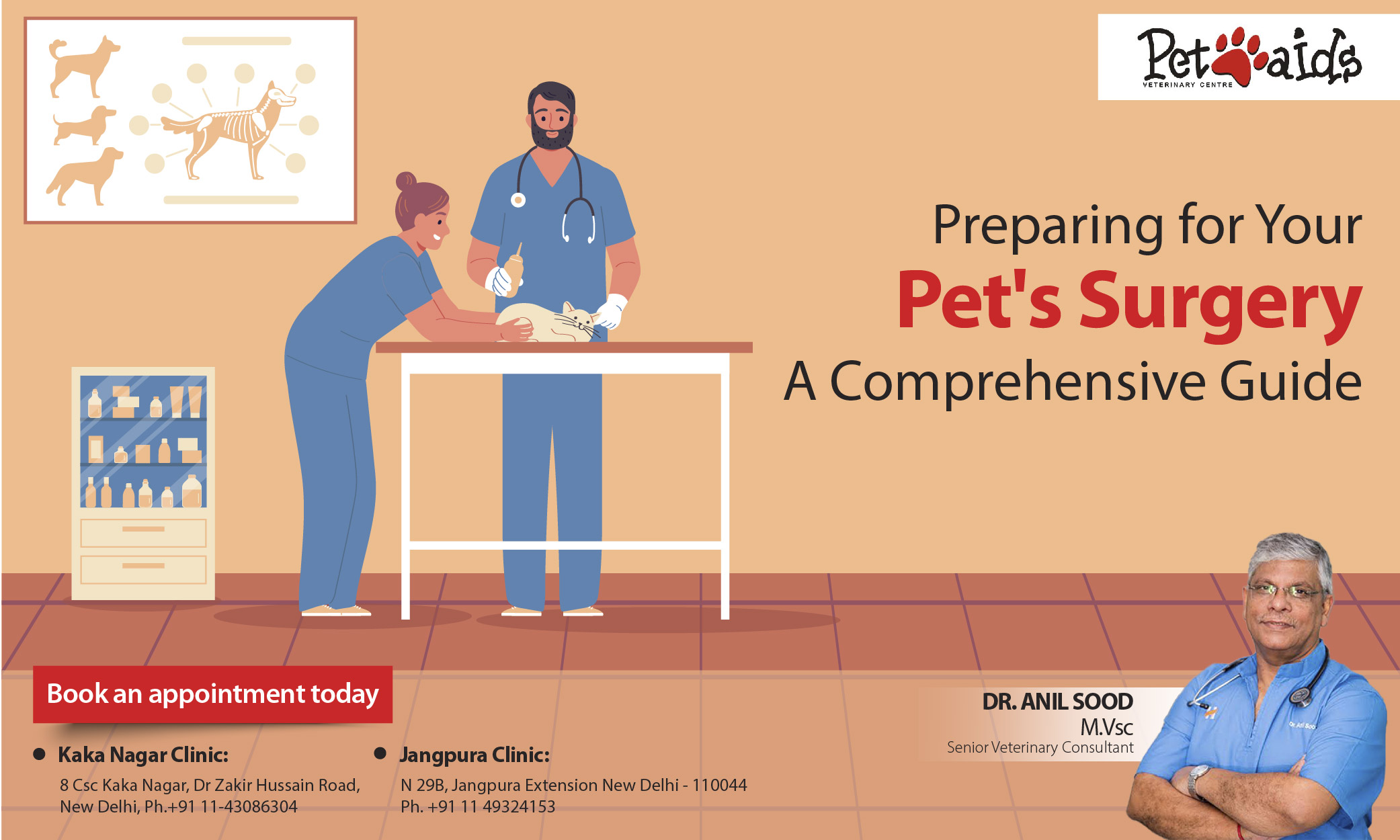Our pets go above and beyond being only animals. They are a part of our family and have been with us through thick and thin. Every one of our pets holds a special place in our hearts. The unconditional affection and loyalty offered by our furry friends is something remarkable.
However, we all know life can be unpredictable and overwhelming. These loyal companions might need surgery over time. Whether it’s your dog surgery or more complex canine surgery, both can be daunting to pet parents. Scary, right? That’s exactly how our four-legged friends feel. But you? You’re about to become their superhero navigator and our guide will help you with the immaculate details to ensure a smooth procedure and a successful recovery.
1. Blood work
First things first – blood work isn’t just a fancy medical checkbox.
Pre-anesthetic blood work will confirm:
- Kidney and liver health
- White and red blood cell counts
- Sufficient platelets for appropriate clotting
- Sufficient protein for improved clotting healing;
- Balanced electrolytes, which ensure the heart’s stability under anaesthesia.
These tests are absolute game-changers. They reveal hidden health mysteries, and potential risks, and give doctors a roadmap for the safest possible surgical route.
Pro-tip? Don’t just nod when the vet explains the results. Ask questions. Be that curious, slightly annoying (but lovable) pet parent who wants to understand every single detail.
2. Medications Management
Medications can be tricky little devils. Some need to be paused, some continue, and some require immaculate precision in timing. Your vet becomes your pharmaceutical guide to help you through these intricate details.
Moreover, before pet surgery services, the veterinarian offers you the right guidance about which medicine to continue and which to stop. A word of advice: create a medication checklist. Stick it on your fridge. Take photos. Do whatever it takes to ensure you don’t miss a single instruction.
3. Pre-Surgical Rest and Calm
Rest is paramount in the days leading up to surgery. Minimize your pet’s physical activities and create a calm, stress-free environment. It’s similar to a human to provide plenty of rest the day before surgery. Think of this as your pet’s relaxing week before the big day. Less jumping around, more gentle cuddles. Create a calm environment that screams “relaxation station”. Soft music? Why not. Extra belly rubs? Absolutely. The goal is to keep stress levels lower than a sloth’s heartbeat.
4. Clear Instructions and Communication
Here’s where most people mess up. They hear medical jargon and zone out. Don’t be that person. Ask about recovery timelines, potential complications, and post-surgery care. Be that partner your vet can rely on.
In addition, communication is the key. Pay attention to the written and vocal directions you get. Failing to do that could potentially prevent your pet from having safe anaesthesia and surgery. However, following them increases the chances of success.
5. Home Coming for Recovery
Transform a section of your home into a recovery suite. Think cosy blankets, easy access to water, minimal movement zones. Your living room becomes a healing sanctuary for your lovely pet. Have soft bedding ready, limit stairs and jumping, and prepare any recommended post-surgical medical supplies. Consider using a crate or confined area to restrict movement during initial recovery stages, which can prevent potential complications.
6. Gradual Feeding Restart
Reintroducing food after surgery requires careful, gradual approaches. Reintroducing food is like negotiating with a toddler – slow, patient, and requiring superhuman levels of understanding. Small portions, easily digestible meals, and more observation than a wildlife documentarian.
An empty stomach is important to decrease the risk of vomiting before, during, and after anaesthesia. With a few exceptions, we recommend taking food away at 8 pm the night before surgery. However, water is important to prevent your pet from getting dehydrated.
Closing Thoughts
Sure, veterinary science does the heavy lifting, but your emotional support? That’s the secret source that turns a medical procedure into a healing experience. Every pet is unique. Every surgery is different. Take a deep breath. You’ve got this. Your furry friend doesn’t just have a pet owner but a pet parent.
The guidelines here? They’re a map, not the actual terrain. Your veterinarian is your true north, your compass in this journey. When looking for the Best dog Surgeries and care, Petaids Veterinary Centre is your best bet. In 1983, Petaids Veterinary Centre was founded. It is currently among the nation’s oldest and most reputable veterinary practices for dogs. Petaids is committed to providing your pet with the outstanding care and services they deserve since we recognise that your pet is a member of your family.
